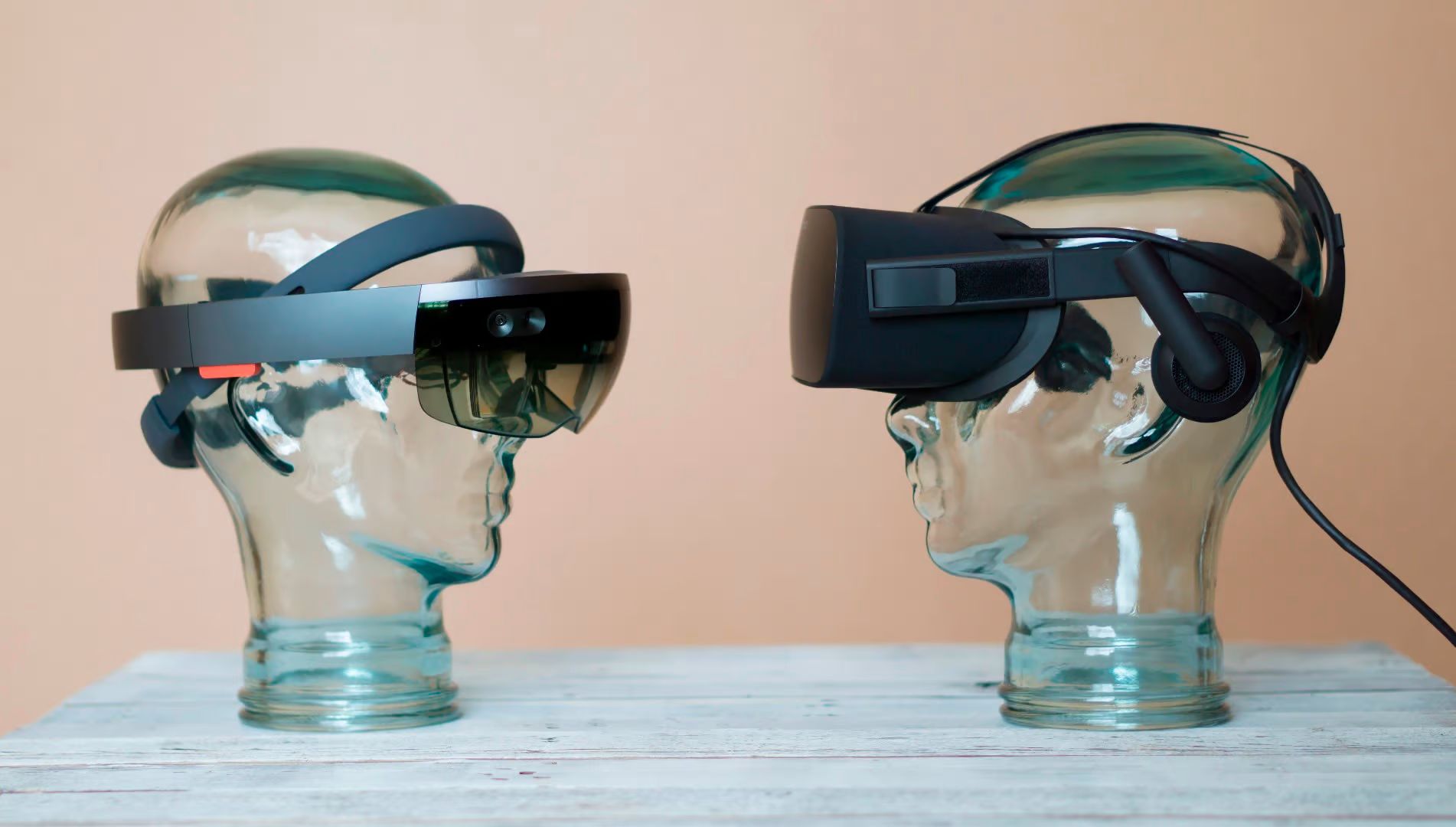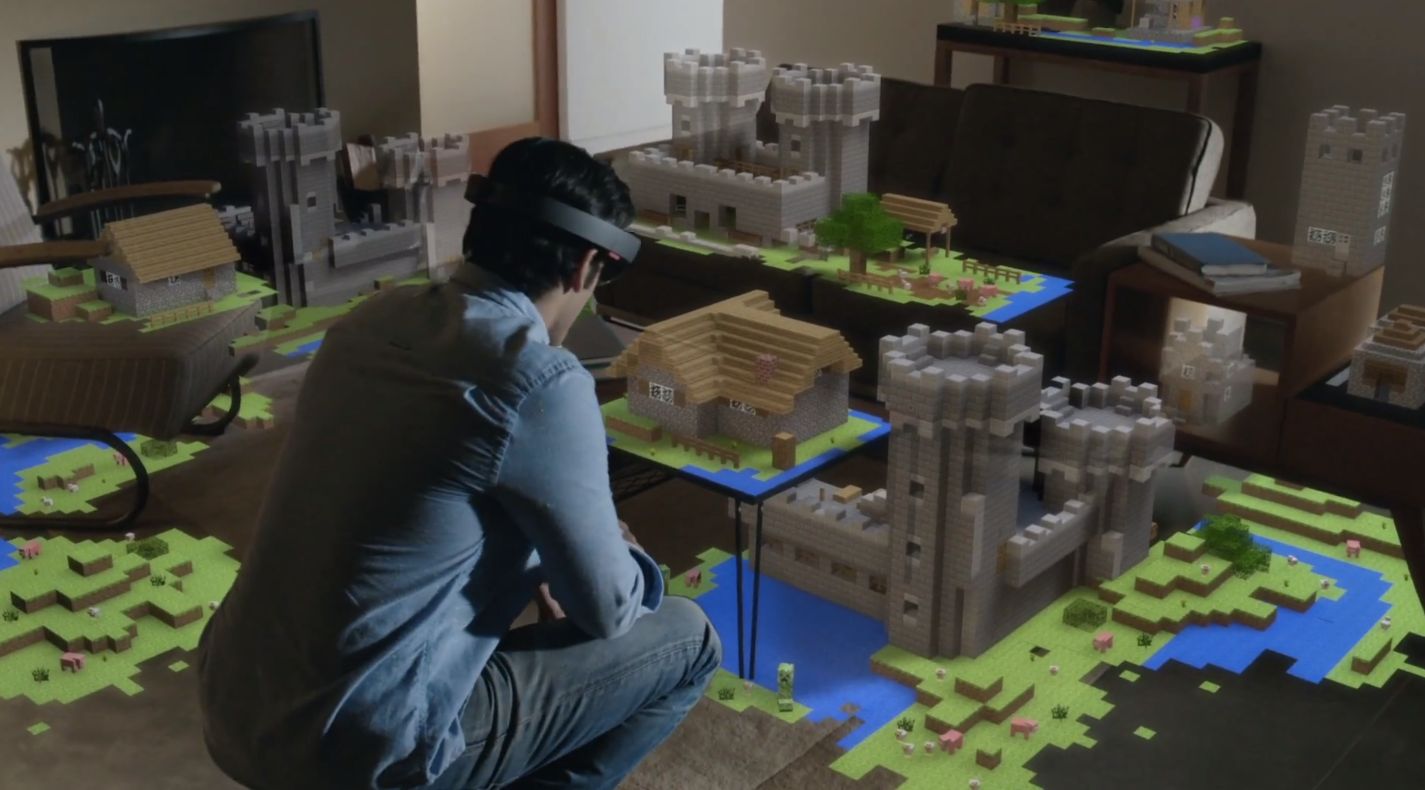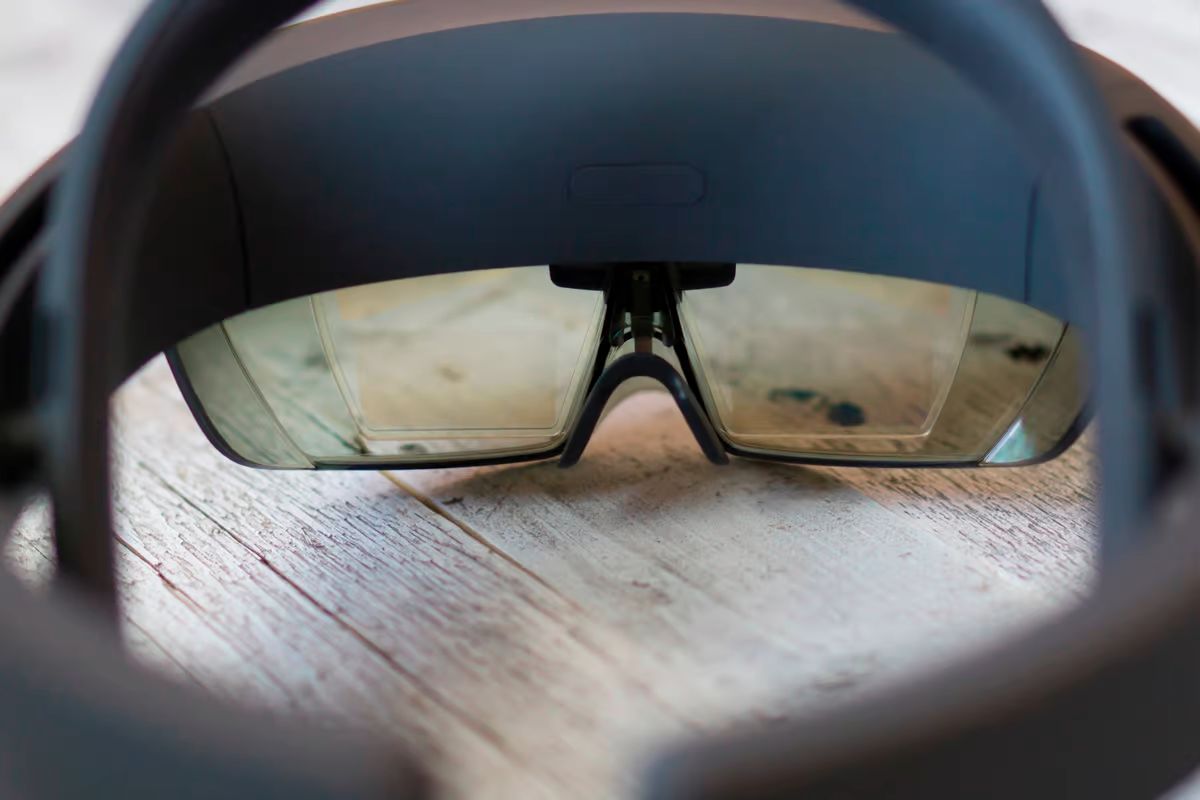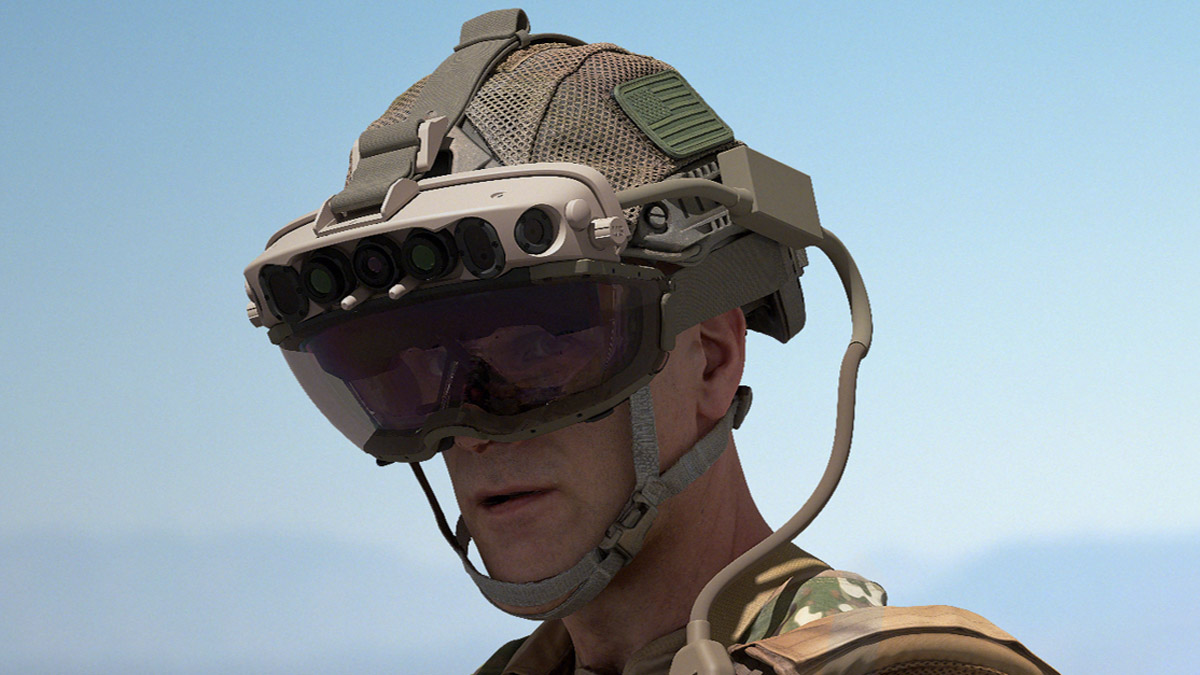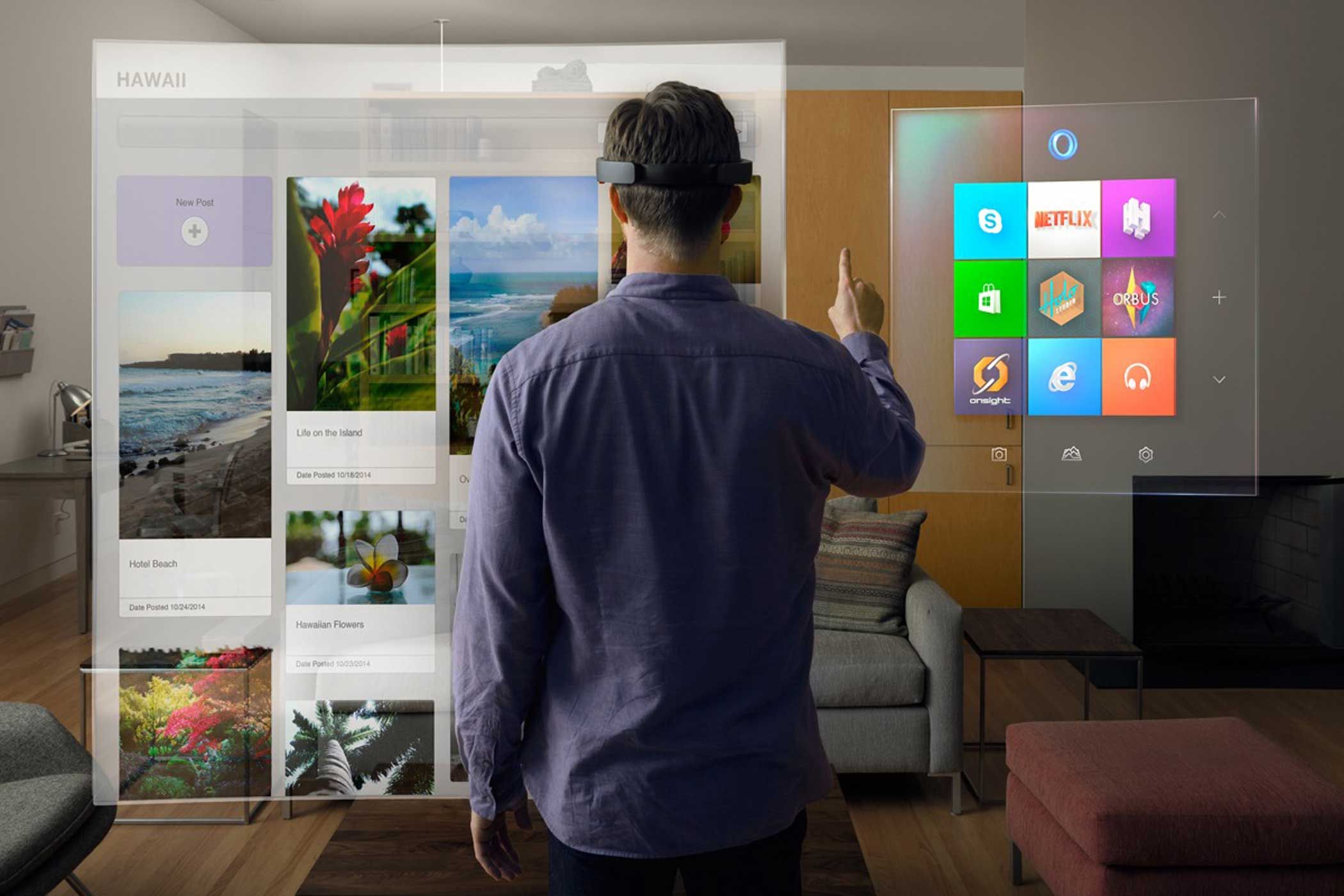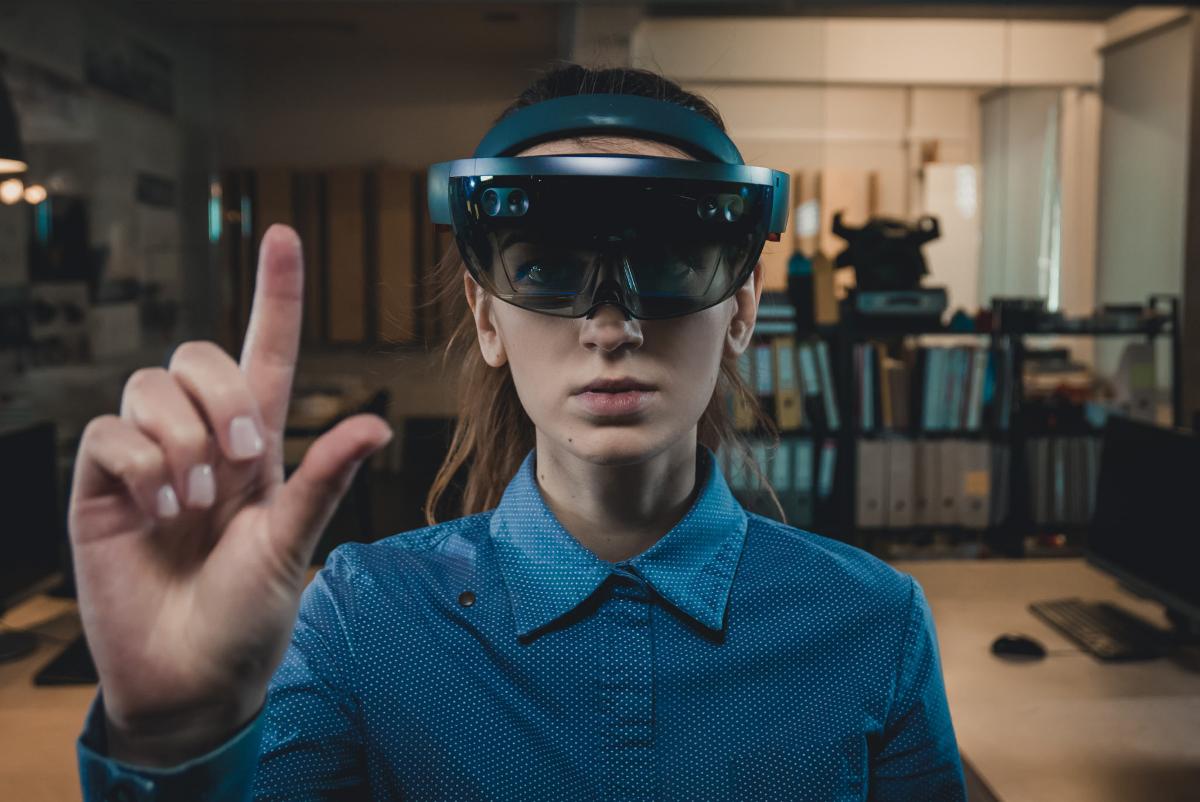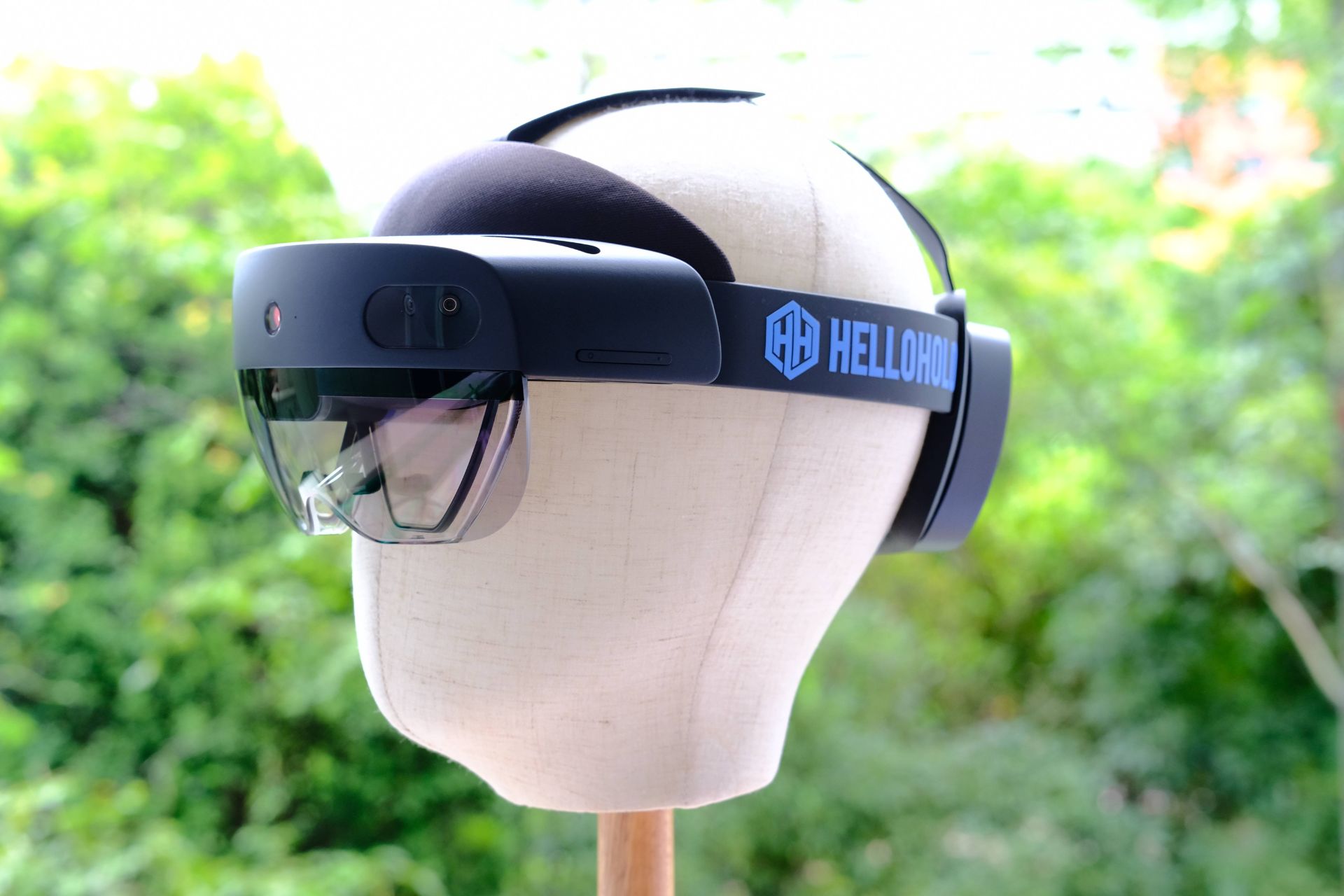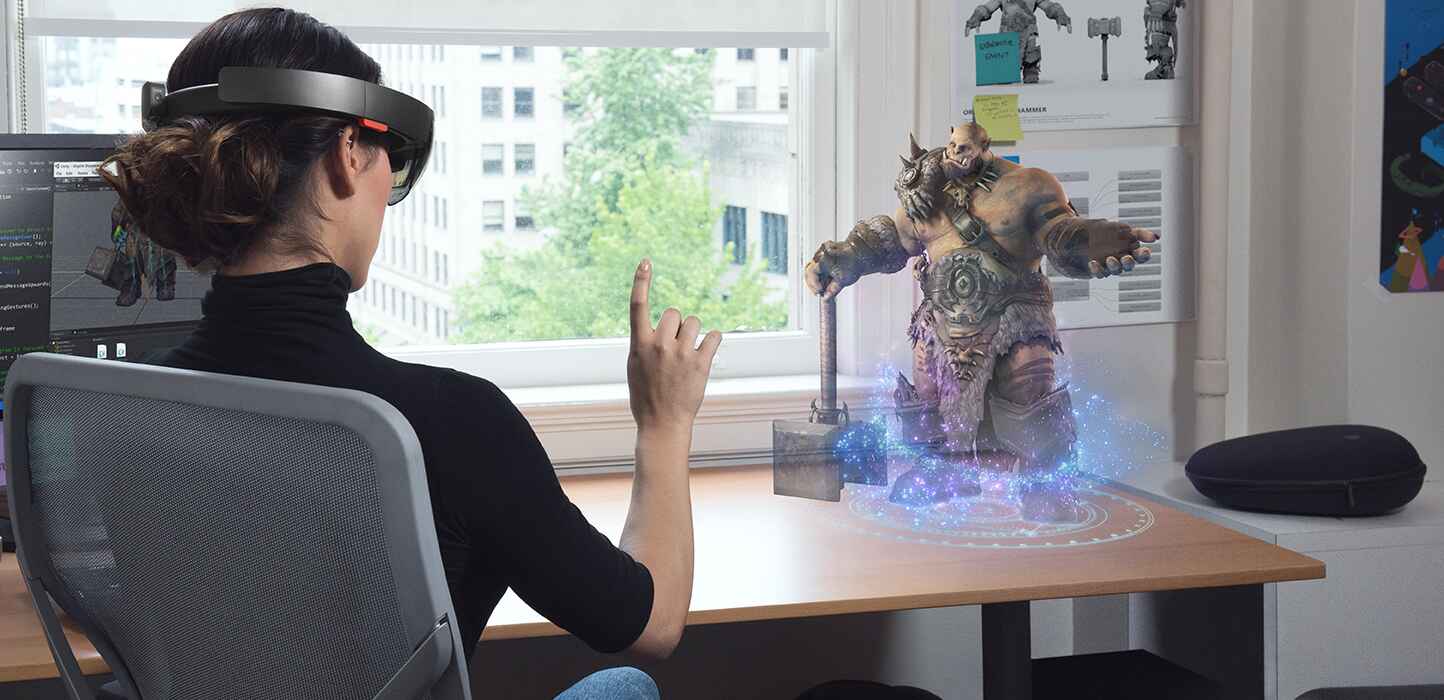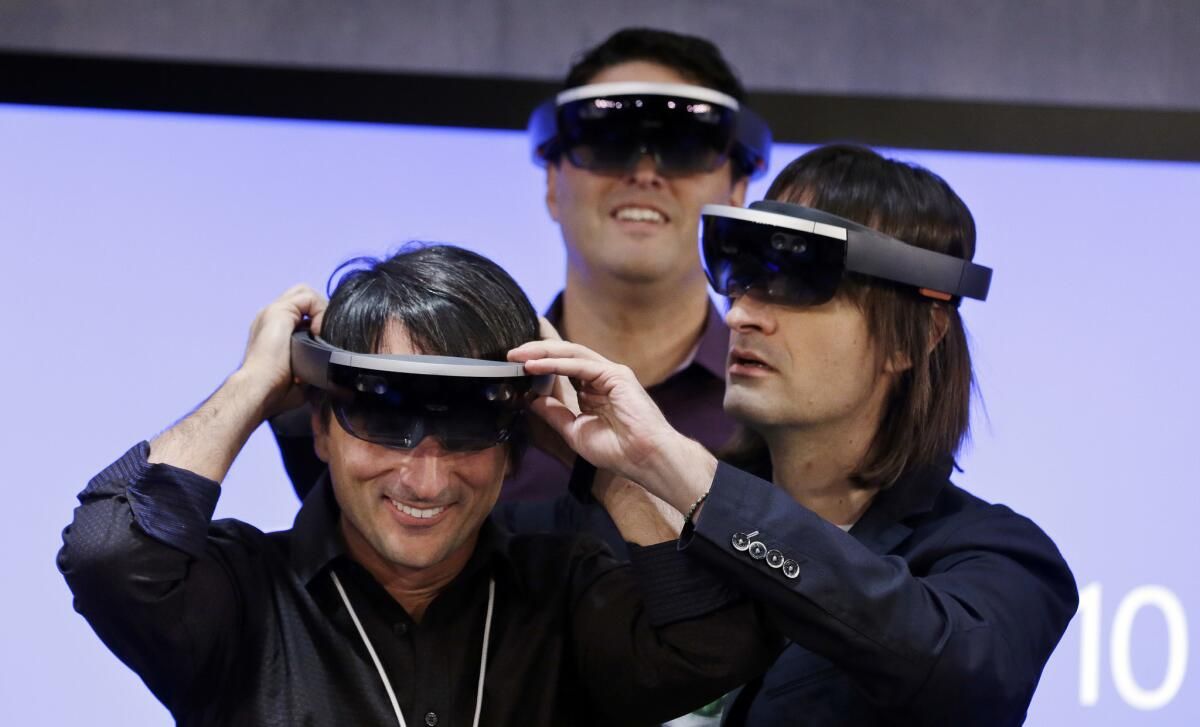Introduction
Welcome to the world of virtual reality (VR), where the boundaries of what we can experience and imagine are expanded beyond measure. VR technology has rapidly evolved in recent years, immersing users in simulated environments and revolutionizing various industries. Among the numerous VR devices available, one that stands out is the HoloLens.
The HoloLens, developed by Microsoft, is a cutting-edge device that brings a unique twist to the world of VR. It is not only capable of providing virtual reality experiences but also offers mixed reality, blending the virtual world with the real world in unprecedented ways. This innovative approach sets the HoloLens apart from traditional VR headsets and opens up endless possibilities for interactive and immersive experiences.
In this article, we will dive into the world of VR and explore the fascinating features of the HoloLens. We will examine how it works, uncover its applications and uses, and discuss both its advantages and limitations. By the end of this article, you will have a better understanding of what makes the HoloLens a game-changer in the realm of virtual reality.
What is VR?
Virtual reality (VR) is a technology that simulates a realistic and immersive experience of a virtual environment. By wearing a VR headset, users are transported to a digital world, allowing them to interact with their surroundings as if they were physically present. This technology has gained immense popularity in recent years, revolutionizing industries such as gaming, entertainment, education, and even healthcare.
At its core, VR relies on a combination of hardware and software to create a fully interactive and immersive environment. The headset is equipped with built-in displays, often with high-resolution screens, that present the virtual world to the user’s eyes. Sensors track the user’s head movements, allowing for a 360-degree view of the virtual space, further enhancing the sense of presence.
In addition to the headset, VR systems may include handheld controllers or sensors that track the user’s hand movements. This enables users to interact with objects and manipulate the virtual environment, adding a level of interactivity and realism. Some advanced VR setups even incorporate full-body tracking, allowing users to move freely in a virtual space.
The goal of VR is to immerse users in a world that feels as real as possible, stimulating their senses and creating a sense of presence and engagement. This is achieved through a combination of realistic graphics, spatial audio, and intuitive user interfaces. VR experiences can range from exploring breathtaking virtual landscapes to engaging in intense gaming battles or even simulating real-life scenarios for training purposes.
VR technology is constantly evolving, with advancements in display resolution, motion tracking, and haptic feedback, pushing the boundaries of what is possible. As the technology becomes more accessible and affordable, we can expect VR to become an integral part of our daily lives, transforming the way we work, learn, play, and connect with others.
What is the HoloLens?
The HoloLens, developed by Microsoft, is an innovative mixed reality headset that blends the virtual world with the real world in a groundbreaking way. Unlike traditional virtual reality headsets that completely immerse users in a simulated environment, the HoloLens combines virtual elements with the user’s actual surroundings.
One of the key features of the HoloLens is its ability to project holographic images or ‘holograms’ onto the user’s field of view. These holograms are seamlessly integrated into the real world, allowing users to interact with virtual objects while still maintaining awareness of their physical surroundings. This mixed reality experience brings digital content to life in a way that was previously unimaginable.
The HoloLens achieves this by using a combination of sensors, cameras, and specialized optics. It has depth-sensing cameras that map the physical environment, allowing the device to understand the user’s surroundings and accurately place holograms in the real world. The headset also features transparent lenses that overlay the virtual content onto the user’s view, providing a natural and immersive mixed reality experience.
With the HoloLens, users can interact with virtual objects using their hands, voice commands, or even eye-tracking technology. They can manipulate and resize holograms, move them around, and even collaborate with others by sharing their mixed reality experiences. This opens up a wide range of possibilities in fields such as design, architecture, engineering, and education.
Besides its mixed reality capabilities, the HoloLens also serves as a powerful computing device. It runs on Windows 10, allowing users to access and use various applications and tools. This versatility makes the HoloLens not only a device for entertainment but also a valuable tool for professionals and developers looking to create innovative and immersive experiences.
In summary, the HoloLens is a groundbreaking mixed reality headset that combines virtual elements with the real world in an immersive and interactive way. By bringing holographic content into our everyday lives, it has the potential to transform industries and reshape the way we work, play, and interact with technology.
Mixed Reality vs. Virtual Reality
While virtual reality (VR) and mixed reality (MR) are often used interchangeably, they are two distinct technologies that offer different experiences and functionalities.
Virtual reality immerses users in a completely simulated environment, creating a sense of presence and detachment from the real world. Users wear a VR headset that blocks out their physical surroundings, replacing them with a digital, virtual world. This allows users to feel as though they are truly present in the virtual environment, with the ability to interact with objects and navigate the digital space. VR is commonly used in gaming, training simulations, and entertainment experiences.
Mixed reality, on the other hand, blends the virtual world with the real world, overlaying digital content onto the user’s physical surroundings. This allows users to see and interact with both real and virtual objects simultaneously. Unlike VR, mixed reality does not completely block out the real world, instead enhancing it with virtual elements. This technology enables users to seamlessly interact with virtual objects within their physical environment, creating a more immersive and interactive experience.
The HoloLens is a prime example of a mixed reality device. It combines the virtual and real worlds, allowing users to see and interact with holograms while still being aware of their physical surroundings. This capability opens up unique opportunities for collaboration, design, and visualization, as virtual content can be precisely positioned and manipulated within the real world.
In comparison, VR provides a more fully immersive experience by completely shutting out the real world. This can be advantageous in situations where users want to escape reality and be fully immersed in a virtual environment, such as gaming or simulations that require undivided attention.
Both VR and mixed reality have their own strengths and applications. VR excels in providing an immersive and fully digital experience, while mixed reality combines the best of both worlds by blending virtual and real elements. The choice between the two depends on the desired experience and the specific use case. As technology continues to evolve, we can expect to see further advancements in both VR and mixed reality, bringing us even more exciting possibilities in the future.
How does the HoloLens work?
The HoloLens is an advanced mixed reality headset that utilizes a combination of sensors, cameras, and optics to create its unique holographic experiences.
At the heart of the HoloLens are its sensors, which include an inertial measurement unit (IMU), multiple cameras, and depth sensors. These sensors work together to track the user’s head movements and understand the surrounding environment. The IMU tracks the orientation and position of the user’s head, allowing the HoloLens to update the holographic content in real-time, ensuring it stays aligned with the user’s viewpoint.
In addition to head tracking, the HoloLens also incorporates a system of cameras and depth sensors. These sensors enable the device to map and understand the physical environment. They capture the real-world scene and create a depth map, which provides information about the shape, size, and position of objects in the user’s surroundings. By analyzing the depth map, the HoloLens can accurately place holograms in the real world, ensuring they interact seamlessly with the user’s environment.
The optics of the HoloLens play a crucial role in creating the mixed reality experience. The headset consists of transparent lenses that allow the user to see through to the real world while overlaying holographic content. These lenses project the holograms directly into the user’s field of view, aligning them with the physical environment. This optical system, combined with advanced display technology, ensures that holographic images appear sharp, vibrant, and seamlessly integrated with the real world.
Another key component of the HoloLens is its built-in spatial sound system. The device uses speakers positioned around the headset to create 3D audio, providing an immersive auditory experience. This spatial sound enhances the sense of presence, making the holograms feel even more realistic and engaging to the user.
Interacting with holograms on the HoloLens is intuitive and natural. Users can use their hands to interact directly with the virtual objects, gestures to manipulate holograms, or voice commands to launch applications or perform actions. The device also supports eye-tracking technology, allowing users to navigate menus and select objects simply by looking at them.
The HoloLens runs on the Windows 10 operating system, providing a familiar interface and enabling users to run a range of applications and software. This allows developers to create innovative experiences and applications that harness the potential of mixed reality.
In summary, the HoloLens employs a combination of sensors, cameras, optics, and audio technology to create its mixed reality experiences. By tracking the user’s head movements, mapping the environment, projecting holograms onto transparent lenses, and facilitating intuitive interactions, the HoloLens delivers a seamless and immersive mixed reality experience.
Applications and Uses of the HoloLens
The HoloLens has a wide range of applications and uses across various industries, thanks to its unique mixed reality capabilities. Let’s explore some of the key areas where the HoloLens is making a significant impact:
- Design and Architecture: The HoloLens is revolutionizing the design and architecture industries by allowing architects and designers to create and visualize their ideas in a three-dimensional space. They can overlay digital prototypes onto physical spaces, making it easier to assess design choices, collaborate with clients, and make real-time adjustments.
- Education and Training: The HoloLens is transforming the way we learn and train. It is being used in medical education to simulate complex surgical procedures, allowing students to practice in a safe virtual environment. Additionally, it is used in training programs for various industries, such as aviation and manufacturing, providing immersive and realistic simulations.
- Manufacturing and Productivity: The HoloLens enhances productivity and efficiency in manufacturing processes. It allows workers to access real-time instructions, 3D models, and remote expert assistance hands-free, reducing errors and increasing productivity. The device is also used for spatial mapping and data visualization, helping workers analyze complex data sets in an intuitive manner.
- Entertainment and Media: The HoloLens has huge potential in the entertainment industry. It provides a unique and immersive way to experience movies, concerts, and live performances. The device is also used in gaming, enabling players to interact with holographic characters and objects in their living rooms, merging the virtual and real worlds.
- Collaboration and Communication: The HoloLens enables remote collaboration in a mixed reality environment. Users located in different parts of the world can meet and collaborate in the same virtual space, visualizing and interacting with shared content. This technology has the potential to transform the way teams work together, breaking down geographical barriers.
These are just a few examples of the wide range of applications for the HoloLens. From healthcare and engineering to art and design, the device is pushing the boundaries of what is possible in mixed reality. As more developers explore its potential, we can expect to see even more innovative uses and applications emerge.
Advantages and Limitations of the HoloLens
The HoloLens brings numerous advantages to the table, revolutionizing the way we interact with technology and the world around us. However, like any technology, it also has its limitations. Let’s explore both the advantages and limitations of the HoloLens:
Advantages:
- Mixed Reality Experience: The HoloLens offers a truly unique mixed reality experience, seamlessly blending the virtual and real worlds. This opens up an array of possibilities for interactive and immersive applications in various industries.
- Hands-Free Interaction: Unlike other VR headsets, the HoloLens allows users to interact with holograms hands-free. Users can use gestures, voice commands, and eye-tracking to manipulate virtual objects and navigate through menus, providing a more natural and intuitive user experience.
- Real-World Awareness: The HoloLens maintains awareness of the user’s physical surroundings, enabling them to interact with virtual elements while still being aware of real-world objects and people. This feature enhances safety and usability in various settings.
- Collaboration and Remote Assistance: The HoloLens enables remote collaboration, allowing users to share mixed reality experiences with others and work together in a shared virtual space. It also facilitates remote assistance, where experts can provide guidance and support to users, enhancing teamwork and efficiency.
- Wide Range of Applications: The HoloLens has applications across various industries, including design, education, healthcare, manufacturing, and entertainment. Its versatility makes it a valuable tool in numerous fields, providing innovative solutions and immersive experiences.
Limitations:
- Field of View: One limitation of the HoloLens is its limited field of view. The holographic content is displayed within a fixed window, which can sometimes restrict the user’s view and limit the overall immersive experience.
- Battery Life: The HoloLens has a limited battery life, and extensive usage may require frequent recharging. This can be a hindrance, especially in scenarios that require prolonged use, such as training or design sessions.
- Physical Discomfort: The HoloLens can be physically uncomfortable to wear for extended periods, particularly for users who wear prescription glasses. The weight and bulkiness of the device may cause fatigue and discomfort over time.
- Cost: The HoloLens is a high-end device, and its cost can be a barrier to widespread adoption. While prices have decreased since its initial release, it is still considered an investment for many individuals and organizations.
- Limited Availability: As of now, the HoloLens has limited availability to developers, professionals, and select industries. It may not be widely accessible to the general public, which restricts its overall impact and usage.
Despite these limitations, the HoloLens continues to push the boundaries of mixed reality technology and offers exciting possibilities for industries and users. As advancements in technology are made, we can expect these limitations to be addressed, further enhancing the potential and usability of the HoloLens.
Conclusion
The HoloLens, with its groundbreaking mixed reality capabilities, has ushered in a new era of immersive and interactive experiences. By seamlessly blending the virtual and real worlds, it has opened up endless possibilities across industries such as design, education, healthcare, and entertainment.
With its unique hands-free interaction, real-world awareness, and ability to facilitate collaboration, the HoloLens has revolutionized the way we work, learn, and communicate. From visualizing architectural designs in 3D space to providing realistic training simulations in medicine, the HoloLens has proven to be a valuable tool in various fields.
However, it’s important to acknowledge the limitations of the HoloLens, such as the limited field of view, battery life, physical discomfort, cost, and limited availability. These limitations, while present, do not diminish the vast potential and impact of this technology. As advancements continue to be made, it is expected that these limitations will be addressed, making the HoloLens even more accessible and user-friendly.
As we look to the future, the HoloLens holds the promise of pushing the boundaries of mixed reality even further. With ongoing developments in hardware, software, and user experience, we can expect to see more innovative applications and uses for the HoloLens emerge.
In conclusion, the HoloLens has redefined our perception of reality, offering a new way to experience and interact with the digital world. Its unique mixed reality capabilities bring together the best of both virtual and real environments, opening up a realm of endless possibilities. As this technology continues to evolve, we can look forward to a future where mixed reality becomes an integral part of our daily lives, transforming the way we work, learn, and engage with the world around us.







